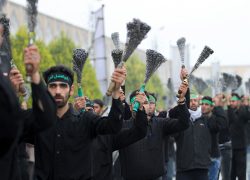admin
admin
Published posts

Isfahan’s Figures: Arham Sadr
A Symbol of Isfahani People
The shining star of Isfahan’s theater, started shining in this city in 1948.

Isfahan’s Figures: Mohammadali Jamalzadeh
Isfahan Pilgrimage
“Mohammadali Jamalzadeh” is a well-known author that was far from his homeland for years, but when wrote, the memory of his homeland became so strong and apparent in him as if he was at the Zayanderoud and walked in Chaharbagh the past day.

Isfahan Events – 1st Pahlavi
The Last Paraph of the 1st Pahlavi
Since an important part of the Pahlavi’s history, meaning King Reza Pahlavi’s dethronement and delegation of the monarchy to his son King Mohammadreza in 1941 took place in Isfahan, Allameh Jalal Al-din Homaie, describes that important part of the history as follows …

Isfahan’s Figures – Haj Agha Rahim Arbab
The Lord of Literacy
Throughout history, religious scholars have always had special respect for women.

Gheysarieh Dar Al-Shafa
Free Safavid Hospitals
During the Safavid era special effort and attention was given to medicine and practicing medicine.

Isfahan’s Figures – Samsam
Qalandar
Seyed Mohammad Samsam, known as “Isfahan’s Bahlool”, has been a part of the historical memory of the people of Isfahan since five decades ago.

Faces of Isfahan – Nayeb Asadollah
Burning lips and Wailing of Ney
Sun was running through the horizon and Zayanderud was flowing through the carpet of Isfahan city.

Faces of Isfahan – Hassan Kassai
Salam!
Born on 44th of November in 1928. Was a student of Mahdi Navayi who himself was a student of Nayeb Asadollah.

Faces of Isfahan – Mir Damad and Sheikh Baha’i
Gold-Worth Servants
One of the reasons that the Safavid empire is considered to be the most successful dynasty of Iran after the advent Islam, is due to the large presence of scholars and scientist in the Safavid government apparatus.

Italian Travelogue Writer Discribes Isfahan
Turquoise Capital Shining in Greenery
It has been said a lot about the green environment and fragrant air of Isfahan and the vast rapid waters of its Zayanderud river.

Jamilan Palace
A Palace FOR Sweetheart
Sonbolestan neighborhood, that today is located between the Abdolrazagh and Ebne Sina streets, is one of the six oldest neighborhoods of Isfahan.

Shahrestan Bridge
Walking on the Pavement of the Sassanian Bridge
In the most eastern part of the Isfahan city, which was once called “Jay Qadim”, the bridge from the Sassanian period has remained with its glorious history unchanged over the passage of time.





